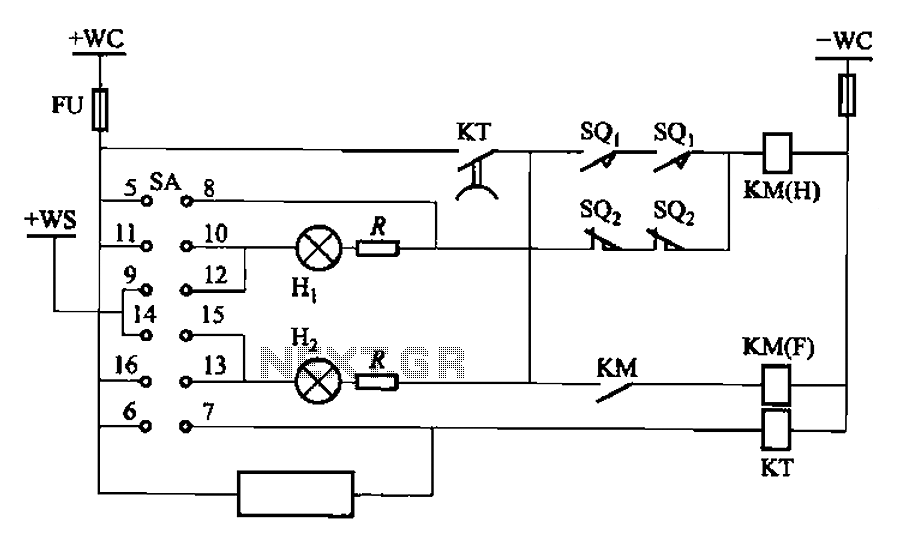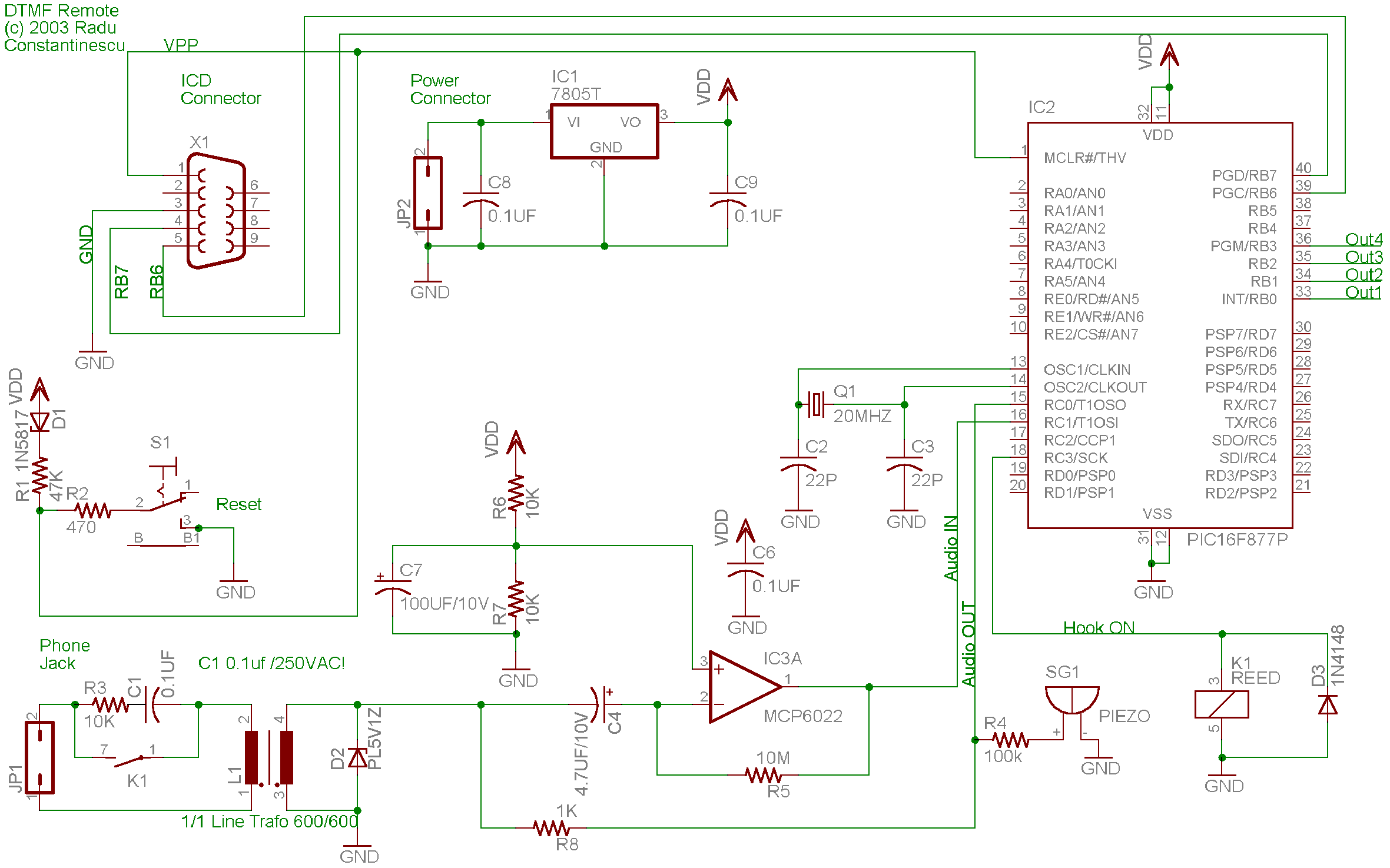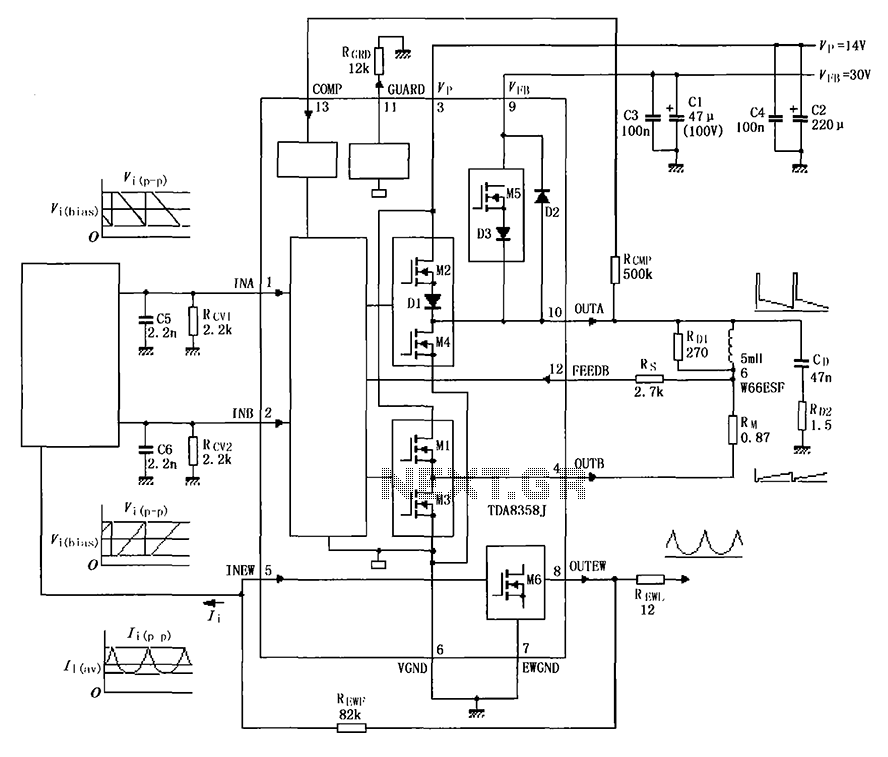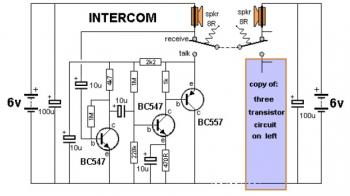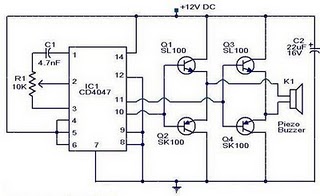
LED 12 Volt Lead Acid Battery Meter circuit
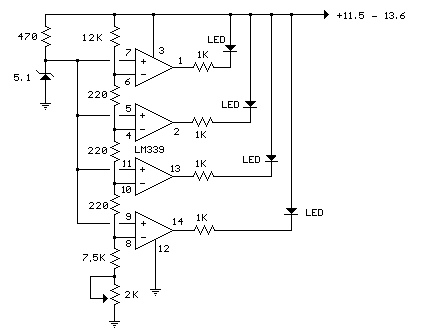
The circuit utilizes a quad voltage comparator (LM339) as a basic bar graph meter to display the charge status of a 12-volt lead-acid battery. A 5-volt reference voltage is applied to each of the positive (+) inputs of the four comparators, while the negative (-) inputs are connected to different points along a voltage divider. The LEDs will light up when the voltage at the negative (-) input surpasses the reference voltage.
The described circuit employs the LM339 quad voltage comparator, which consists of four independent comparators capable of operating with a single supply voltage. This configuration is particularly suitable for monitoring the state of charge of a 12-volt lead-acid battery by providing a visual representation through a bar graph display.
In this application, a voltage divider is created using resistors connected in series across the battery terminals. This divider scales down the battery voltage to a range suitable for comparison with the 5-volt reference. Each comparator within the LM339 is configured to compare the voltage at its negative input (derived from the voltage divider) against the fixed 5-volt reference at its positive input. As the battery voltage varies, the voltage at the negative inputs changes accordingly.
The output of each comparator is connected to an LED indicator. When the voltage at the negative input exceeds the 5-volt reference, the corresponding comparator output goes high, turning on the LED. This setup allows for multiple LEDs to light up sequentially, providing a clear visual indication of the battery's charge level. For instance, if the battery voltage is low, fewer LEDs will be illuminated, while a fully charged battery will cause all LEDs to light up.
This circuit can be powered using the same 12-volt battery being monitored, ensuring simplicity and ease of integration into battery management systems. The use of the LM339 is advantageous due to its low power consumption and ability to function across a wide range of input voltages, making it an ideal choice for battery monitoring applications.In the circuit, a quad voltage comparator (LM339) is used as a simple bar graph meter to indicate the charge condition of a 12 volt, lead acid battery. A 5 volt reference voltage is connected to each of the (+) inputs of the four comparators and the (-) inputs are connected to successive points along a voltage divider.
The LEDs will illuminate when the voltage at the negative (-) input exceeds the reference voltage.. 🔗 External reference
The described circuit employs the LM339 quad voltage comparator, which consists of four independent comparators capable of operating with a single supply voltage. This configuration is particularly suitable for monitoring the state of charge of a 12-volt lead-acid battery by providing a visual representation through a bar graph display.
In this application, a voltage divider is created using resistors connected in series across the battery terminals. This divider scales down the battery voltage to a range suitable for comparison with the 5-volt reference. Each comparator within the LM339 is configured to compare the voltage at its negative input (derived from the voltage divider) against the fixed 5-volt reference at its positive input. As the battery voltage varies, the voltage at the negative inputs changes accordingly.
The output of each comparator is connected to an LED indicator. When the voltage at the negative input exceeds the 5-volt reference, the corresponding comparator output goes high, turning on the LED. This setup allows for multiple LEDs to light up sequentially, providing a clear visual indication of the battery's charge level. For instance, if the battery voltage is low, fewer LEDs will be illuminated, while a fully charged battery will cause all LEDs to light up.
This circuit can be powered using the same 12-volt battery being monitored, ensuring simplicity and ease of integration into battery management systems. The use of the LM339 is advantageous due to its low power consumption and ability to function across a wide range of input voltages, making it an ideal choice for battery monitoring applications.In the circuit, a quad voltage comparator (LM339) is used as a simple bar graph meter to indicate the charge condition of a 12 volt, lead acid battery. A 5 volt reference voltage is connected to each of the (+) inputs of the four comparators and the (-) inputs are connected to successive points along a voltage divider.
The LEDs will illuminate when the voltage at the negative (-) input exceeds the reference voltage.. 🔗 External reference
